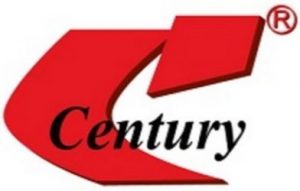| “On average, the garment and textile sector has to import about 70 per cent of raw materials”, said Kich. — VNA/VNS Photo Danh Lam |
HCM CITY (VNS) — Vietnamese garment and textile firms are increasing their investments in locally made raw materials in an effort to satisfy strict rules of origin set by free trade agreements of which Viet Nam is a member.
“The garment and textile sector has depended on imported raw materials for a long time, under FTAs that the country has already signed or will sign, we cannot rely on imported sources any longer,” Bui The Kich, chairman of Dong Nai Garment Corporation, said.
On average, the garment and textile sector has to import about 70 per cent of raw materials, he said.
The domestic content rate at his company has increased to 45 per cent, thanks to investments in producing nonwoven materials, he said.
Last year the company also invested VND300 billion (US$13.39 million) in building the Hung Long Industrial Complex in Dong Nai Province, targeting to become a concentrated garment and textile place, he said.
Vu Duc Giang, chairman of the Viet Nam Textile and Garment Association (Vitas), and chairman of Garment 10 Joint Stock Company, said domestic garment firms had been encouraged to invest in yarn, weaving and dye, but the safest and most suitable way was a capital contribution or purchase of a stake in domestic and foreign firms to ensure material supply sources.
In its investment plan for this year, the company plans to work with its partners to produce yarn, he said, adding that this would ensure material supply for products for export and domestic sale.
Nguyen Hong Giang, general secretary of the Viet Nam Cotton and Spinning Association, said Viet Nam enjoyed high export growth last year with total export revenue of $28 billion, but the domestic supply of raw materials and accessories was very modest.
For instance, the country needs about 8.5 billion metres of fabric annually, but it produces only three billion metres.
The supply of domestic fabric has not kept pace with demand, while both the yarn-forward rule of origin under the Trans Pacific Partnership (TPP), and the fabric forward rule of origin under the Viet Nam – EU free trade agreement require intensive local supply, he said.
Therefore, to be able to enjoy benefits from FTAs, Viet Nam must quickly increase capacity for fabric production.
Dang Phuong Dung, Vitas’s general secretary, said to maximise benefits from FTAs, besides Government support, domestic firms should invest more in upgrading their production technology, designs and quality to gain a firm foothold in the world market.
She called for closer co-operation among domestic garment makers and raw material and accessory producers.
According to the Ministry of Industry and Trade, Vietnamese garments have to pay an average tariff duty of between 12-30 per cent when exporting to the US and EU.
For example, exports worth $10 billion require a tariff duty of $1.7 billion.
Once the TPP comes into force, tariffs will fall to zero, enhancing Vietnamese garments’ competitiveness, the ministry said.
According to Vitas, rules of origin, including the yarn–forward rule of origin, of FTAs will pose a business challenge, but in the long term this will motivate businesses to improve investment strategies and adjust production to meet market demand.
Each firm must establish its own supply chain or join hands with counterparts to form a supply chain in order to add more value to their products as well as improve competitive capacity, Vitas said.
With tariff advantages under free trade agreements, the garment and textile sector expects to enjoy export growth of more than 20 per cent this year, according to the association. — VNS
Vietnamnews
19/01/2016
Quote from: “http://vietnamnews.vn/economy/281359/firms-to-seek-local-suppliers.html“



